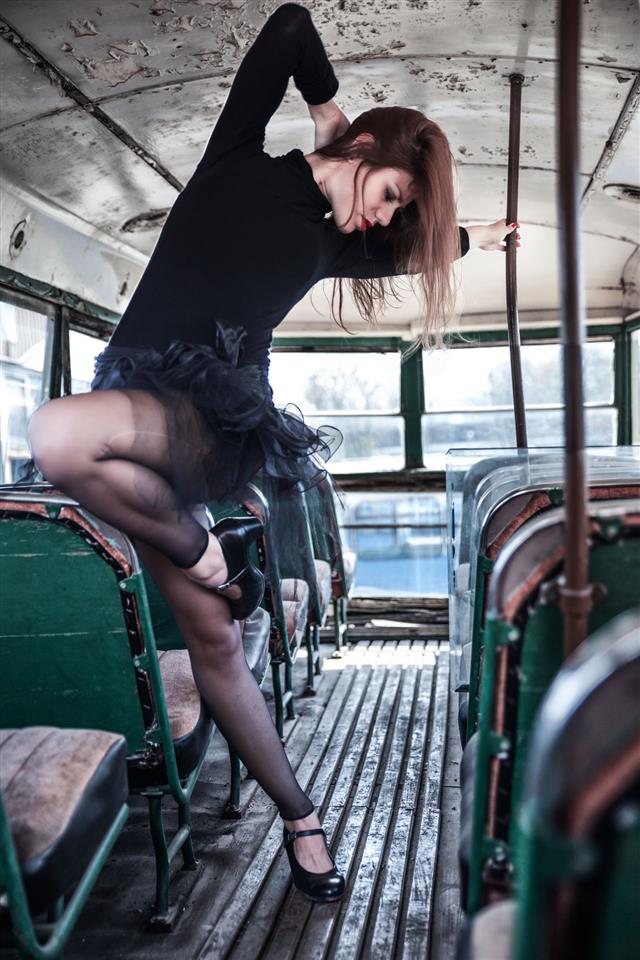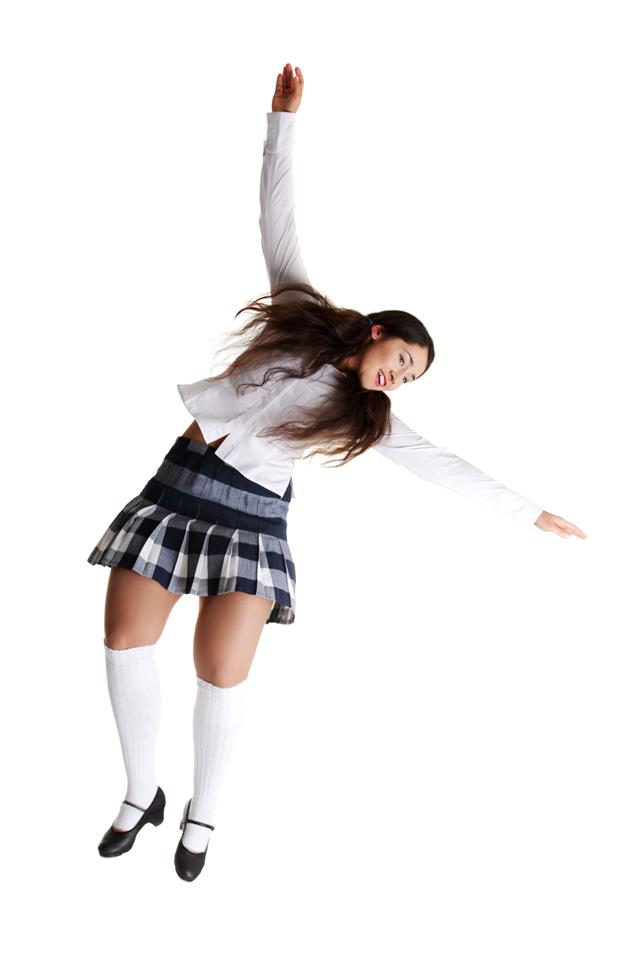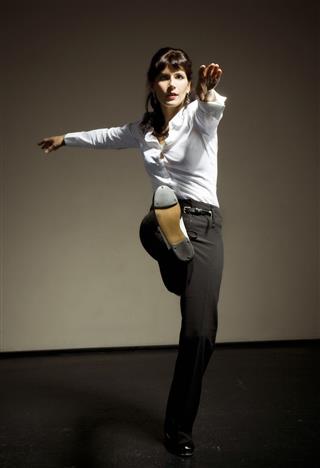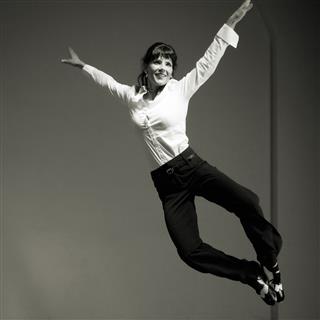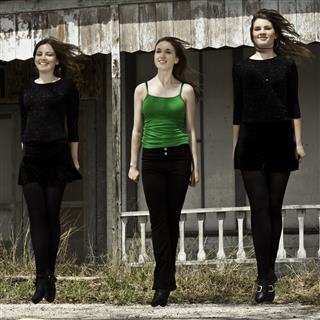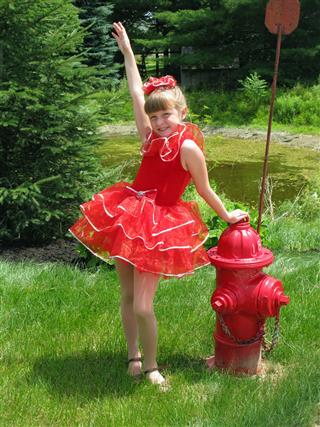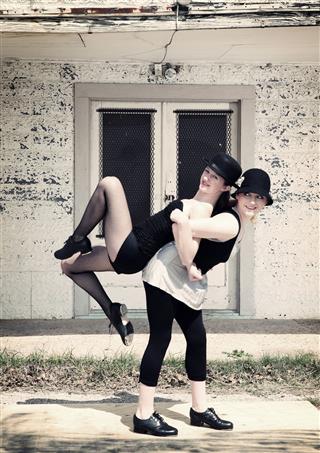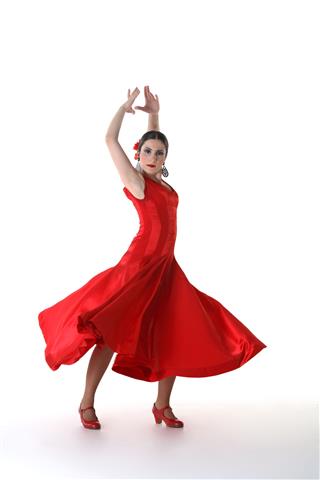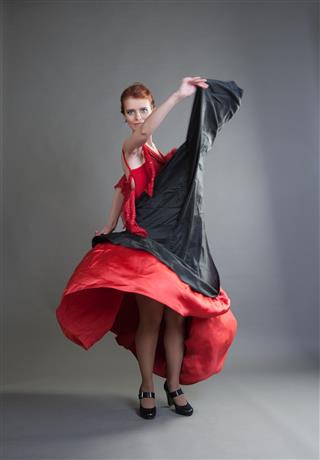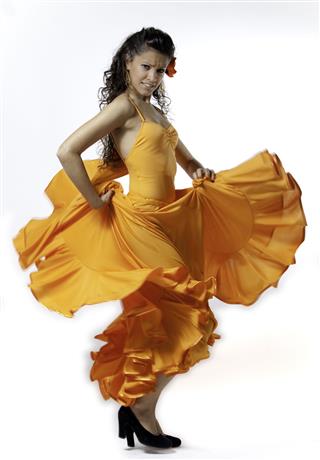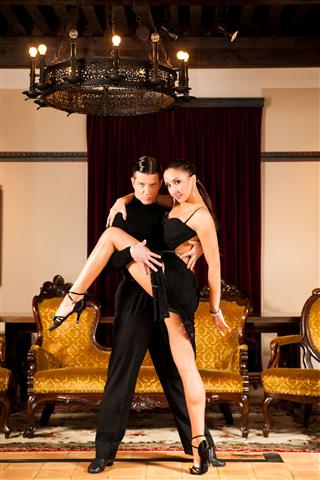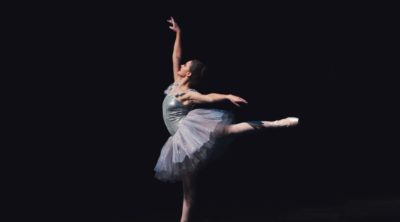
Get your toes tapping with this DancePoise article that captures the spectacular essence of tap dancing with some of the most extraordinaire and famous tap dancers of all time.
Ever watched that iconic scene on the ‘Let Yourself Go’ track where Fred Astaire and Ginger Rogers swing their way through a Saturday night dance contest? With those smooth, sassy moves with brisk jumps and sashays, they are just ‘in the pocket’, and watching them tap will make you instinctively tap to the rhythmic beats.
Tap dancing, undoubtedly, has American provenance. It essentially evolved from an amalgamation of ethnic dance styles of the Irish, Scottish, and the Africans through slave communities and immigration. From a percussive mode of language by means of rhythmic footwork to one of the most popular dance forms of today, tap dancing has come a long way.
A cheerful dance form, tap dancing actually culminated from repressive laws that forbade African slaves from playing drums or native instruments. Nonetheless, they chose a less ostentatious form of expression that modified and fused with Lancashire Clog and Irish jig, and later continued to embrace changes under the clout of Jazz.
Tap dancing came to the stage in the middle of 19th century through vaudeville shows where white men would blacken their faces, and perform on their interpreted versions of African-American dance form. Since then, tap dancing has evolved and has had many legends associated with it. Below are some of the most famous tap dancers of all time.
By 1846, Master Juba had become a recognizable figure in the tap world owing to his complex tap dancing technique that involved use of different areas of his feet to create syncopated rhythms and beats. He was one of the first African-American dancers to have toured along with a white minstrel group in 1848, and the first ever African-American performer to have gained top billing among a troupe of white performers. He was essentially known for ‘Juba’ dance, which was a rhythmic meld of African steps and Irish Jig and Clog. However, he died at a young age of 27, in London, around 1852, but is considered a legend of his time.
Bill ‘Bojangles’ Robinson is remembered as America’s famous tap dancer who evidenced changes in the world of tap dancing, as he first started performing in minstrel shows at the age of 5, then moved to vaudeville shows in 1905. Later, he starred in Broadway from 1928, and went onto feature in Hollywood motion pictures from 1930. A happy-go-lucky-natured African-American tap dancer, his elegant percussive footwork remains popular even today.
Harold and Fayard Nicholas were arguably the best tap dancing team. They pioneered flash technique that relied heavily on acrobatics and tap dancing, which became an instantaneous hit and gained them their first Broadway debut in 1936. Their unique style commingled full split, jumping stairs, twists, flips, and spins with their tap routines. The Nicholas Brothers were tremendously popular for their revolutionary ‘acrobatic dancing’, and by 1940, featured in movies like Sun Valley Serenade, Kid Millions, and Stormy Weather.
There are many who remember Ann Miller’s sexy machine gun tap dance in the 1953 movie Kiss Me Kate, where she breaks into her iconic tap routine atop a coffee table, enthralling with her tap and long legs alike. She starred in a string of musicals during the 1940s and ’50s and tapped with the tap legend Fred Astaire in Easter Parade. One of the few female tap dancers who made it big, her six-minute tap performance in the movie The Thrill of Brazil remains one of her notable performances.
This list can’t be complete without this tap legend. Fred Astaire’s matchless skill as a tap dancer wowed people throughout the world. Born as a dance prodigy, Astaire performed with his sister, Adele, in many vaudeville shows. The brother sister duo debuted on Broadway in 1917, and continued till 1932. Fred Astaire borrowed suave movements from ballet and ballroom dance that brought a sophisticated appeal to tap. His collaboration with choreographer Hermes Pan is considered legendary, and the duo has given us some of the best tap moments on the silver screen. His partnership with Ginger Rogers from 1933 to 1939 (famous Broadway actress and tap dancer) was a roaring success, and they appeared in movies like Flying Down to Rio, Top Hat, The Story of Vernon and Irene Castle, etc.
Had it not been for Gene Kelly’s mother’s insistence, Gene would probably have been a hockey player and not the dancer par excellence that we know of him today. Gene’s first brush with success came with the Pulitzer Prize-winning drama The Time Of Your Life, in 1939, where he got an opportunity to dance and choreograph. Since then, Kelly went on to entrance audiences worldwide with musicals like Cover Girl (1944), An American in Paris (1951), and his most notable, Singin’ in the Rain (1952). Gene’s epic performance is with the animated character Jerry mouse in Anchors Aweigh (1945). Gene’s tap dancing was more ground bound and dynamic as opposed to Astaire’s. His tap dancing was characterized by vigor, athleticism along with influences of jazz and ballet. Gene’s phenomenal success as a dancer, choreographer, actor, director, and producer is testimony to his limitless capabilities.
From regaling audiences with her legendary partnership with Fred Astaire to winning an Academy Award for her performance in Kitty Foyle, Ginger Rogers was an epitome of beauty and talent. Rogers embarked on her journey to stardom by starring in vaudeville with her then husband, Jack Culpepper. But her real ticket to prominence proved to be the musical, Top Speed, which got her rave reviews and earned her one of her best Broadway roles in Girl Crazy. The year 1933 took Rogers to an altogether different plane of popularity as that was the year that marked her teaming with Fred Astaire. However, she didn’t know to tap, but Astaire’s sheer perfectionism and punishing rehearsals molded her into a consummate female tap dancer. This revolutionary duo changed the dynamics of tap dancing and starred in as many as 10 musicals together.
Donald O’Connor’s vaudevillian upbringing gained him the reputation as the king of tap. He began performing when he was about a year old, even before he could stand on his tender feet. O’Connor’s tap virtuosity came from his mother’s training in tap dancing and soft-shoe technique as a kid. O’Connor’s first film appearance happened in 1937 with Sing You Sinners with Bing Crosby, when he was 12 years old. But he rose to prominence after he signed a contract with Universal Studios in 1941, and starred in a number of musicals. O’Connor broke all records with Gene Kelly- Stanley Donen directed and choreographed musical comedy Singin’ in the Rain. O’Connor’s vaudeville training and comic sense mingled with Gene Kelly’s intricate tap technique and made the movie a roaring success.
Vera Ellen started cutting the rug at the age of 10 and showed tremendous potential as a versatile dancer. Beautiful, innocent, and a little goofy, she was well-known for her tiny waist size. Ellen’s proficiency as a tap dancer gained her work alongside the likes of Fred Astaire, Gene Kelly, Donald O’Connor, and Danny Kaye. A jaunty tap dancer, Ellen also specialized in ballroom tap, toe tap, ballet, jazz, and acrobatics. She starred in successful movies like Wonder Man (1945), Happy Go Lovely (1951), The Belle of New York (1952), Call Me Madam (1953), Big Leaguer (1953), etc. Her most remarkable performance remains from the 1954 blockbuster White Christmas, in which she performed some fantastic, high speed dance numbers.
Tap dancer, actor, musician, director, and the brainchild behind improvised tap choreography Gregory Hines began tapping when he was just 2 years old. Hines credited his understanding and skill as a tap dancer to African-American tap dancers like the Nicholas Brothers, Charles “Honi” Coles, Teddy Hale, etc., whom he watched and studied when they came to perform at the Apollo Theater. Hines also starred in many Hollywood movies like The Cotton Club (1984), White Nights, opposite Mikhail Baryshnikov (1985), and was known for his predilection for different genres of cinema. Hines is still remembered for improvisational tap in which he played around with tap steps, rhythmic drum beats, and tap sounds. A man with an abiding passion for his craft, Hines appealed for the creation of National Tap Dance Day which is celebrate in 40 cities in the United States.
- Maceo Anderson
- Doris Day
- George Murphy
- Hermes Pan
- Sammy Davis Jr.
- Jane Powell
- Condos Brothers
- Henry LeTang
- Leonard Reed
- Leon Collins
- Howard Sims
- Dianne Walker (Lady Di)
- Eleanor Powell
- Jimmy Slyde
Tap dancing might not be a part of mainstream movies today, but it continues to evolve and entertain people through Broadway productions.
